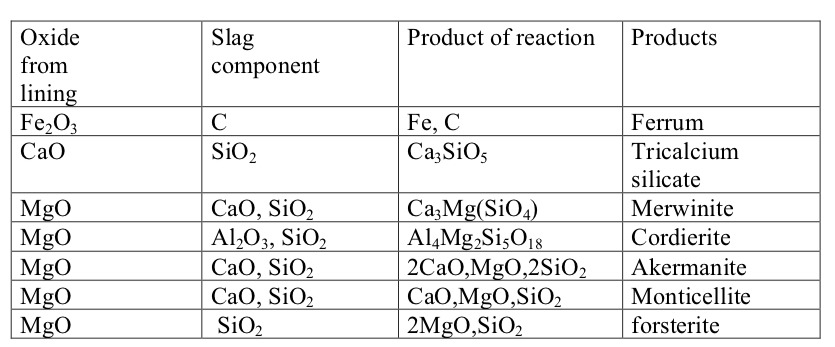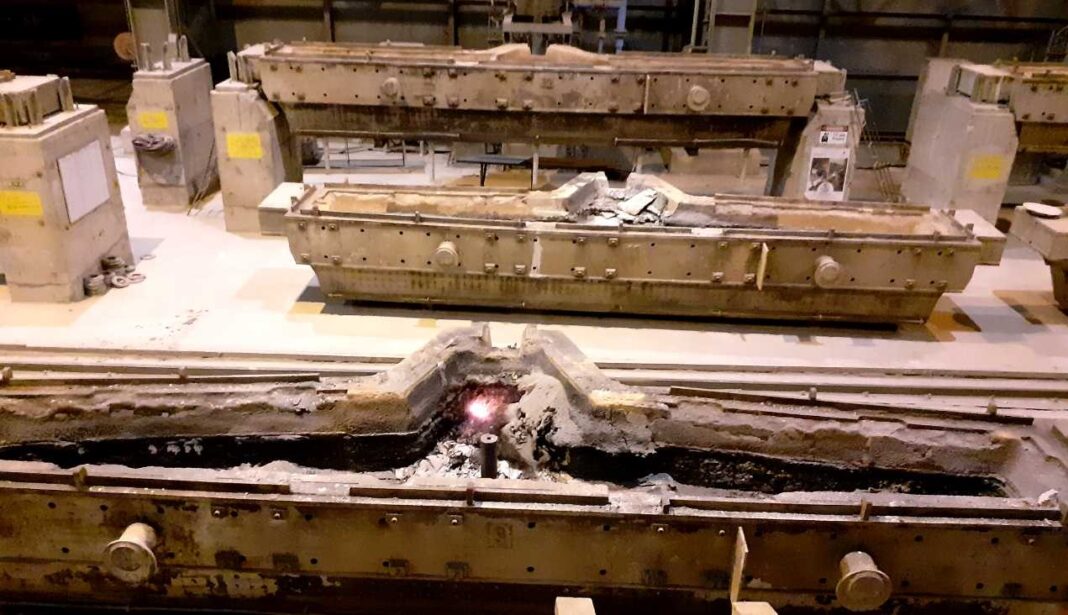Owing to mass world steel production being cast on continuous casting machines, great emphasis has been laid to maximize the effectivity of this process with refractory properties-both physical and chemical playing a key role in their behavior with slag and steel.
With the growing demand for improved quality and lower costs of production the understanding of numerous variables influencing the wear has become very important. Two of such variables are refractory/slag and refractory/steel interactions. Longer exposure of refractory to steel or slag especially during higher sequence may influence the quality due to erosion and chemical attack. However higher quality of refractory materials calls for a higher price and thus the selection is to be made keeping in mind the cost and the quality requirement for a particular grade of steel and the casting duration.
The slag formed from tundish covering compound and refining powders influences the wearing of the working lining of tundish. Apart from covering and refining powders, ladle well filler and carried over slag from the ladle also influence the performance of the lining. The wear of the lining is evaluated by the change in dimensions of working lining in the range of slag mark in a particular tundish.
The life of tundish working lining is predominantly affected by tundish slag, which consists of covering and refining powder and other unwanted compounds like ladle well filler and carried over slag from the ladle, while its amount is difficult to estimate when the material balance is calculated. However, the effect of covering and refining powders on the degradation of the tundish lining depends in the operating conditions.
Interactions between the slag and refractory lining
In the tundish, when tundish covering powder which contains SiO2[40%], Al2O3[12%], CaO[6%], MgO[9%], Fe2O3[6%], C[25%] is used, due to the presence of carbon, consequent reduction of Fe2O3 in the lining by carbon from the slag takes place. The formation of tricalcium silicate can occur by the reaction of CaO with SiO2 in the slag as well as in the lining. The reaction of MgO from lining with Al2O3 and SiO2 from the slag is also possible and the product is known as cordierite. Monticellite CaO.MgO.SiO2 can form as low melting compounds which can wash-off MgO grains from lining with a subsequent decline in thickness. The reaction between MgO from lining and CaO and SiO2 from the slag can also lead to the formation of a low melting compound known as akermanite. The principle of corrosion of the lining is the same as that of monticellite. On the reaction interface slag – lining forsterite 2MgO. SiO2 can also be present.
Changes in the chemical composition of the slag during casting
The material balance of materials entering into the slag during the sequence includes the ladle well filler and the slag from Ladle Furnace, which influences the total remains slag basicity, as well as its chemical composition. The amount of ladle well filler quantity is calculated from the consumption on 1ton of steel, which means that each casting ladle volume of 150 tons of steel brings about 40 kg of ladle well filler with the chemical composition (SiO2 – 85% & C – 15%). It is complicated to express carried over slag quantity flowing into the tundish and it depends primarily on the human observation or the effectiveness of slag detection technology. The alteration in slag chemical composition can negatively affect steel cleanness, especially during the non-steady state.

Arbitrary Slag composition
Fe(%)-2.5,MnO(%)-1.76, SiO2(%)-21.7,CaO(%)-16.2, MgO(%)-9.08, Al2O3(%)-28, Cr2O3(%)-.24, Basicity-.423
Influence of the ladle well filler and carried over slag from ladle on the wear of the tundish lining
Ladle well filler used is acidic in nature because it is mostly based on SiO2. After opening each ladle, the tundish slag receives about 40 kg of ladle well filler. Approximately 400 kg of ladle well filler gets into tundish slag after 10 heats of casting sequence. The amount of carried-over slag from the ladle at the end of casting, which gets the tundish slag, is difficult to quantify due to the method of detection. The representative chemical composition of the slag from the ladle cannot be expressed as it depends on previous steel treatment done in the secondary metallurgy rea. Generally, the slag brings particular components such as SiO2, CaO, MgO, Al2O3, as well as Cr2O3. The concentration of components brought by ladle well filler and carried over slag from the ladle will be higher at the inlet of the tundish than in other areas of the tundish when the baffle is used in the tundish baffle. Thus, significantly higher wear in the slag line area at the tundish inlet was observed which was five to ten times higher than in the other areas and this was mainly due to the presence of ladle well filler and slag carried over from the ladle.



